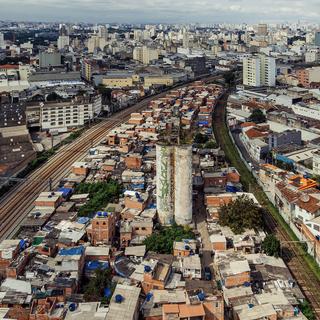


The final throes of São Paolo's Moinho favela
FeatureLast April, the far-right governor Tarcísio de Freitas issued an order to evacuate the last shantytown in the city center, which he intends to transform into the new administrative district. Despite the lack of a genuine relocation solution, most families have resigned themselves to leaving.
The small house empties as eyes fill with emotion. And anxiety. "We're terrified," admits Barbara Monique dos Santos, 28, wearing a pink puffer jacket and holding a child in her arms. Around her, movers carry mattresses and a stove down the small staircase. Some, ashamed, lower their gaze. "We built this house with our own hands. It was our home for fourteen years... In less than two weeks, we were forced to leave it," she sighs.
On April 22, the young woman and her family were the first to leave the Moinho favela. A narrow neighborhood, shaped like an oliphant, a jumble of bricks, plaster, and wet wood, wedged between highways and railroads, where between 3,000 and 4,000 people lived. Its name refers to an old mill from the early 20th century. At its heart, six abandoned silos – silent sentinels helplessly watch the unfolding drama: the destruction of one of São Paulo's 1,700 slums and the last one in the city center.
The brutal evacuation order was issued in mid-April by the state governor, Tarcísio de Freitas, a far-right military figure and former infrastructure minister in the Bolsonaro government from 2019 to 2022. "We were given two days to decide!" says Barbara Monique dos Santos, standing next to her husband, a ride-share driver. The couple has a baby and a 6-year-old in poor health who had to undergo a tracheotomy. They were left with little choice. "We were afraid of ending up on the street. We resigned ourselves," says the mother bitterly, before leaving.
'We signed, but out of fear of losing everything'
Officially, housing was promised to each household: for most of them, that means tiny apartments ranging from 20 to 40 square meters, far from the city center. "I used to walk to work, now I will spend three to four hours a day commuting," says Janaina Silva, 35, a laborer at a local factory.
You have 74.54% of this article left to read. The rest is for subscribers only.
